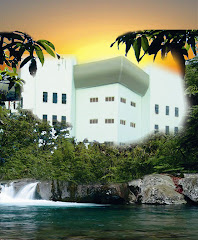FOR THOSE OF US LIVING IN THE FIJI ISLANDS WILL NO DOUBT BE FULLY AWARE OF THE BRUCELLOSIS EPIDEMIC HITING OUR CATTLE FARMS IN TAILEVU AT THE MOMENT.
AS A FORM OF INFORMATION, WE HAVE DECIDED INCLUDE THIS POSTING FOR YOUR PERUSAL AND INFORMATION.
THIS INFORMATION WAS POSTED ON THE NET BY THE MONTANA STOCK GROWERS ASSOCIATION RECENTLY.
Montana Stockgrowers Association
Brucellosis Frequently Asked QuestionsMontana was classified “Brucellosis‐Free” by the U.S. Department of Agriculture from 1985‐2008. After the discovery of several positive cows in a Bridger area herd in May of 2007, and the subsequent discovery of a single infected animal in a herd near Pray, in June 2008, USDA downgraded Montana to Class A status for brucellosis. Class A status imposes strict testing requirements for cattle leaving the state. Economists have estimated that the increased testing alone will cost Montana producers $6 million—not counting potential market discrimination.
What is brucellosis?Brucellosis is an infectious disease caused by the Brucella bacteria. There are several species of the disease, but the one most pertinent to Montana is Brucella abortus. B. abortus affects primarily cattle, bison and elk. In these animals, the disease can cause cows to abort their calves, the birth of weak calves, and retained placentas.
Can people become infected with brucellosis?Yes. In humans, brucellosis—often referred to as Undulant Fever—can cause a range of flu‐like symptoms including fever, sweats, headaches, back pains, and physical weakness. Severe infections of the central nervous systems or lining of the heart can occur and brucellosis can also cause long‐lasting or chronic symptoms that include recurrent fevers, joint pain, and fatigue. In 1947, 6,400 Undulant Fever cases were reported in the U.S. Thanks to the pasteurization of milk and almost 75 years of work ridding cattle herds of the disease, only 100‐200 people in the U.S. contract the disease per year according to the Center for Disease Control. Worldwide, brucellosis remains a major threat to human health, especially in countries that do not have good standardized and effective public health and domestic animal health programs. Areas currently listed as high risk are the Mediterranean Basin (Portugal, Spain, Southern France, Italy, Greece, Turkey, North Africa), South and Central America, Eastern Europe, Asia, Africa, the Caribbean, and the Middle East.
How is brucellosis transmitted?Animals can become infected through the ingestion of the bacteria, most often after nose contact with infected animals, aborted fetuses or placenta, and occasionally by eating or drinking contaminated food or water. Pregnant, infected animals are most likely to spread the disease. Humans can contract brucellosis by coming into contact with animals or animal products that are contaminated with the bacteria. Humans are generally infected in one of three ways: eating or drinking something that is contaminated with Brucella, breathing in the organism (inhalation), or having the bacteria enter the body through skin wounds. The most common way to be infected is by eating or drinking contaminated milk products. There is no danger from eating cooked meat products because the disease‐causing bacteria are not normally found in muscle tissue and they are killed by normal cooking temperatures.
Why are ranchers so afraid of brucellosis?Ranchers do not fear brucellosis because it causes their cattle to abort—there are many diseases that cause abortion. They fear it because under federal rule, if even a single animal in their herd contracts the disease, at best, they will face a lengthy quarantine that effectively shuts their operation down, and, at worst, can require them to slaughter their entire herd, regardless of number of positives, the number of cattle, or the years spent developing the genetic line of
the herd. Either outcome will create enormous economic hardship for the producer and can drive them out of business. We cannot afford to lose any more ranchers, especially in the Greater Yellowstone Area where their ranches provide open space and crucial habitat for wildlife.
Why is brucellosis so heavily regulated?In the past, brucellosis was a major problem afflicting both human and cattle health in the U.S. In 1934, USDA began its Cooperative State and Federal Brucellosis Eradication Program with the goal to eradicate brucellosis from the nation’s cattle—similar to programs used to control tuberculosis. In 1956, there were 124,000 affected herds found by testing in the United States. In 2007, prior to Montana’s second case, USDA announced that for the first time in history, the entire U.S. was brucellosis‐free. The program has cleaned up the disease from the nation’s cattle, but cattle in Montana, Idaho, and Wyoming face threats of brucellosis transmission from infected wildlife in the Greater Yellowstone Area.
What are the rates of infection in bison and elk in the GYA?Over the past 20 years bison in Yellowstone National Park have tested between 40‐60% seropositive (blood tests reveal antibodies to brucellosis). Free roaming elk that range from Yellowstone National Park are thought to be between 1‐5% infected, though the data is sparse and not statistically significant. Elk that visit Wyoming’s feedgrounds in the winter have tested with seroprevalence similar to the bison in YNP. The most recent brucellosis cases in Montana, Wyoming and Idaho have all been linked to elk.
Why don’t ranchers just vaccinate their cattle? While official calfhood vaccination for brucellosis is not currently required in the state of Montana (it is in Idaho and Wyoming), most ranchers vaccinate their heifer calves anyway. Ranchers living in the Greater Yellowstone Area almost certainly vaccinate their calves and some even give their adult cows booster vaccinations to improve immunity. However, the vaccine is only 60‐80% effective. Several of the cows in Montana and Wyoming that were discovered to have brucellosis had previously been vaccinated against the disease.
What else are ranchers doing to protect their cattle from the disease?Ranchers in the Paradise Valley of Montana have taken the lead in working cooperatively with state and federal officials to develop herd plans that are meant to protect cattle from wildlife brucellosis transmissions and detect transmissions that may have occurred as quickly as possible to prevent further spread. These herd plans include best management practices such as regular testing, vaccinating calves and sometimes adult cows, fencing of calving and hay storage areas, hazing of elk from the property, and moving cattle from pasture to pasture to maintain spatial and temporal separation of cattle and elk. The second case of brucellosis was discovered because of these efforts and further spread of the disease was prevented. However, current brucellosis rules do not reward ranchers for their vigilance, but rather punish ranchers who have brucellosis‐infected cattle through no fault of their own. The result of this second case was the loss of the entire state’s Class Free status.
Why don’t we just make the area around Yellowstone a separate cattle zone from the rest of the state?This issue is a lot more complex that most people realize. Split‐state status does nothing to address the root of the problem and only sacrifices those living and working in the higher risk area. These ranchers are dealing with an emerging, very immediate risk of transmission from infected wildlife that are traveling farther and farther from the park. Wildlife managers need to take responsibility for the infection in wildlife. Cordoning off those ranchers only provides disincentive for agencies to deal with the problem. There are also market issues to consider. By separating a small area off from the rest of the state, you doom those ranchers to lower prices and discrimination in the market. Montana can do better than the current rigid, punitive split‐state status system. MSGA is working hard to develop a plan that responds to wildlife‐to‐cattle transmissions when and where they happen, assists ranchers that have to deal with these rare infections, addresses the concerns of ranchers in low risk areas and addresses health concerns about brucellosis in the states that buy our cattle.
Who cares if the wildlife have the disease, if you protect cattle, that should be good enough, right? There is no surefire way to ensure that cattle do not come into contact with infected wildlife, short of fencing off huge chunks of land with wildlife‐proof fencing. Aside from being costly, this method would disrupt wildlife migration corridors. Moreover, brucellosis is still a human health risk. Allowing the disease to go unchecked in wildlife only increases the risk that human beings will contract the disease. Hunters can become infected with brucellosis through skin wounds or by accidentally ingesting the bacteria after cleaning infected wildlife they have killed. While brucellosis is rarely fatal in humans, there is no cure and the symptoms can become debilitating. State and Federal officials must work to rid the GYA of brucellosis for the health of the ecosystem, including wildlife, the Montana cattle industry and people who reside or recreate in that area. Studies have shown that, if brucellosis eradication program efforts were stopped, the costs of producing beef and milk would increase by an estimated $80 million annually in less than 10 years.
What does MSGA hope for the future in this issue? We would like to see prosperous cattle ranching coexist with a healthy, disease‐free wildlife population in the GYA. This issue is about much more than a disease—brucellosis will take its toll on more than just the health of the Greater Yellowstone Ecosystem. Montana’s legacy of ranching and stewarding the land in the GYA is at stake. Ranchers have long been providers of crucial wildlife habitat and the open space that so many Montanans appreciate.



















